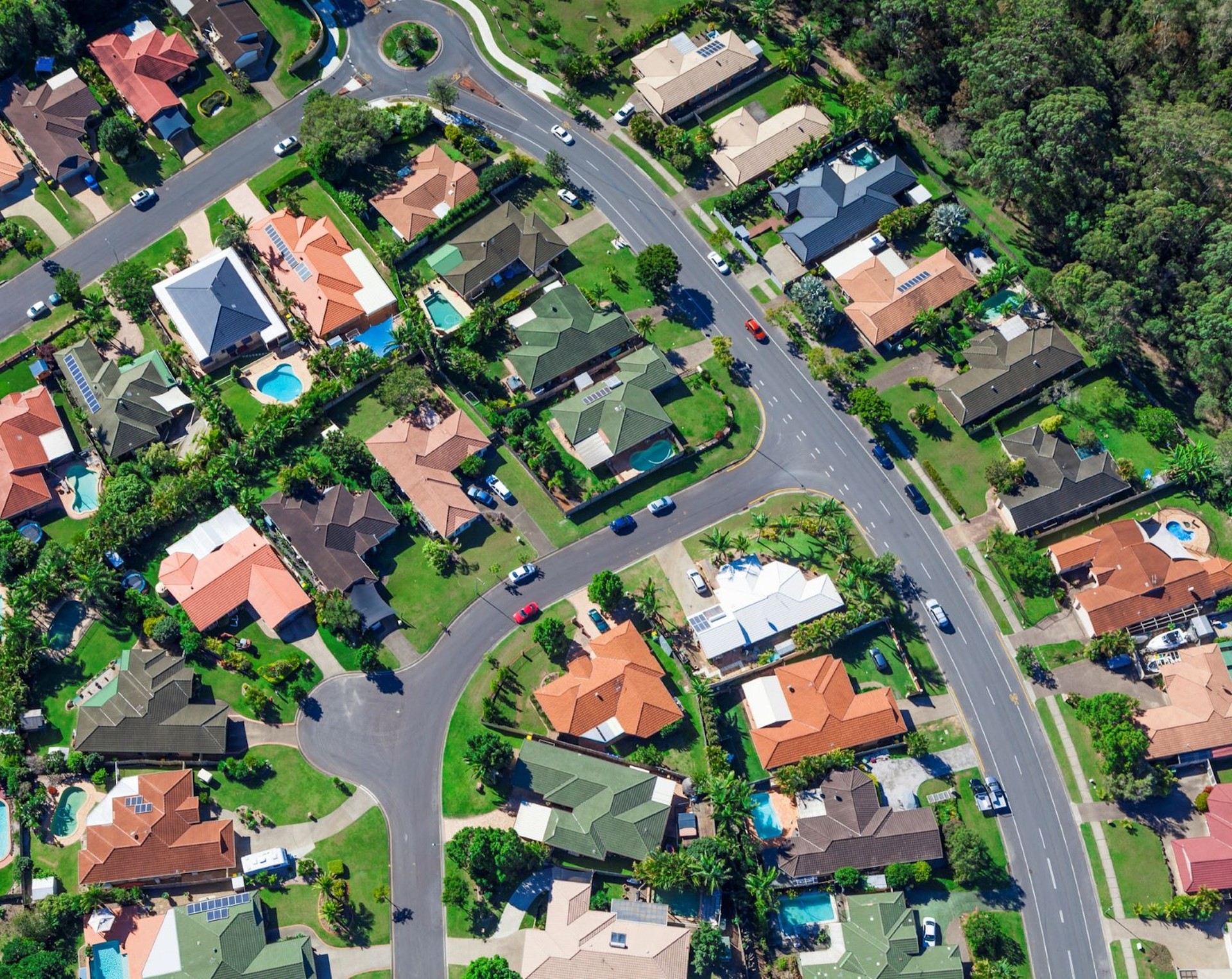Buying a home for the first time is an exciting process. Unfortunately, buying a home is not like going to the store and making a purchase. In order for the purchase of a home to be completed, a legal transfer of ownership must take place. In Australia, the process of transferring ownership is known as conveyancing. In this post, we'll tell you everything you need to know about the conveyancing process, so you'll have no surprises when it comes time for you to make your dream home a reality.
Finding a conveyancer
A home is a major purchase, and buying one is a major life decision. Because of the legal complexities involved in the process, having a qualified and experienced conveyancer is important. Buyers should make sure that the conveyancer they choose is licensed before hiring them to ensure the process goes smoothly. YouBroker believes you should spend your time looking for your dream home, not a conveyancer. To help with that, we'll make the process easy for you by helping you find a conveyancer and linking them with your financial institution.
What is conveyancing?
Conveyance is another word for transfer, so the conveyance of a piece of property from the seller to its new owner is known as conveyancing. This is a legal procedure that ensures both buyer and seller are protected throughout the process. The process starts before the contract is drawn up and concludes with the transfer of the title to the property. The entire process can take up to four to six weeks.
What is a conveyancer?
A conveyancer, as the name may imply, is a person who is responsible for overseeing the transaction between the buyer and seller of a property. A conveyancer performs the type of activities typically handled by a solicitor. While a solicitor is capable of handling a conveyance, it is not a legal requirement for the conveyancer to be a solicitor. Licensed conveyances require professional indemnity insurance.
The buyer may engage a conveyancer to check the vendor’s statement, conduct searches and advise the buyer on the terms and conditions within the contract of the sale.
Legal practitioners who hold a current practising certificate and professional indemnity insurance can also be used in transferring titles of the property. Legal practitioners typically can perform general legal work and provide legal advice, however, some specialise in conveyancing and property law.
What does a conveyancer do?
Conveyancers and legal practitioners are responsible for all the paperwork relating to the transfer of ownership of the property.
When you are selling, conveyancers will:
- Manage, prepare, review and advise on any needed legal documents, ensuring those documents comply with Australian state and territorial legal regulations. These will include the contract of sale and vendor’s statement as well as the certificate of title
- Organise the release of the deposit to you
- Handle any extension request and similar communications from the buyer
- Handle the discharge of your mortgage with your bank or financial institution
- Coordinate the collection of title documents to transfer them to the buyer
When you are buying, conveyancers will:
- Manage, prepare, review and advise on any needed legal documents, ensuring those documents comply with Australian state and territorial legal regulations. These will include the contract of sale and vendor’s statement as well as the certificate of title
- Handle the exchange of money between the involved parties, and any other necessary conveyance activities.
- Help you understand what exactly you are purchasing
- Research property titles and check for any third-party rights, such as easements, to enter or use the land
- Contact the real estate agent and vendor on your behalf
- Hold funds on your behalf in their trust account and disburse trust funds per your instructions
Why are conveyancers useful?
Unfortunately, lenders, including Australia’s largest bank, don't always act fairly when dealing with home buyers. Conveyancing helps protect the purchaser and seller from parties, such as the lender, that breach the rules of property transfer.
The pre-purchase advice that you can get from conveyancers is not something to be taken lightly, you are making a purchase worth hundreds of thousands of dollars after all! First home buyers are particularly vulnerable. Real estate agents are after commission and some can provide misleading information or advice to close a sale. Finding problems with the property or contract after you’ve committed or paid an expensive deposit is not something you want to experience.
How much does a conveyancer cost?
This isn't a question that has a direct answer, because, in addition to varying from conveyancer to conveyancer, the price also varies by state. However, as a ballpark estimate, you can expect a licensed conveyancer to cost around $800-1,000.
A good idea is to get written quotes before you choose a conveyancer or legal practitioner.
There is no official charge and you will usually be charged for disbursements in addition to the service fee.
Disbursements are expenses and outgoings incurred by your conveyancer such as certificate fees, photocopying, paperwork registration and title search. Conveyancers must disclose their expenses to clients and the client has the right to negotiate a costs agreement, receive bills incurred and be advised of any charges.
There are also other costs that you will incur during the property title exchange such as:
- Mortgage insurance
- Homebuilding insurance
- Survey reports
- Building and pest inspections
- Stamp duty and mortgage duty
- Valuation fees
- Levies such as strata
- Council, land tax and water rates
How does PEXA relate to conveyancing?
PEXA, which stands for Property Exchange Australia, was created in 2010 and has changed the way conveyancing is done. PEXA is an online system for the preparation of conveyancing documents, settlement of transactions and lodgement of dealings. The goal is to reduce paperwork, transaction times, and human error.
What are the stages of residential conveyancing?
The conveyance of a property doesn't begin in earnest until a property has been decided on and the interested parties have agreed to begin the deal. Although that's technically the first step of the process, it doesn't hurt to secure the services of a conveyancer as early as possible. Once you are sure you want to purchase (or sell) a home, conveyancers are experts in their field and can provide advice when questions arise. That being said, the stages of conveyancing are outlined below. Keep in mind that the conveyancer should have a contract drawn up and ready to review 48-72 hours before an offer is made on the home.
1. Arrange a contract of sale
Once a seller has put a home on the market, and a buyer has agreed to make the purchase, the first step in beginning the transfer of ownership is to draw up a contract. This is generally done by the seller's solicitor.
Before the first draft of the contract, the solicitor will conduct a title search to verify that the owner is actually legally entitled to sell the property. They will check to make sure the title deeds are in order, any rates and charges are fully paid, and whether or not there are any restrictions on the property.
During this time, there are also several legal documents that must be signed by the seller. These documents will depend on the locality in which the home is being sold. Because some of these documents can take a while to obtain and process, this can be a lengthy phase of the process.
The contract of sale will include all applicable details about the transaction, such as the purchase price, names of buyer and seller, information regarding the transfer of ownership, the terms of payment and loan details, details of the property and any conditions for the transaction. These terms can be negotiated if you feel it is necessary. Importantly, the contract of sale must only be signed when it has been reviewed by the buyer’s conveyancer.
2. Exchange the property
This is the part of the process where the contract becomes binding. The solicitor for the buyer and the solicitor for the seller will meet and exchange the contracts that have been signed by their respective clients. During this process, both solicitors will look over the signed contracts to ensure that everything is correct. Because the contracts need to be identical, each solicitor will look over both and compare them. From here on out, both parties must comply with the terms of the agreement or face legal repercussions.
Before this, a holding deposit is typically paid. A holding deposit is not the same as the deposit for the purchase of the property however and is smaller. It is fully refundable before the contract is exchanged and is used to show that the buyer is serious about buying the property.
If there is no need for changes to the contract, the buyer and seller will then enter the settlement process, which simply involves final checks and ensuring the contracts are signed by all parties.
3. Pay the deposit
Most of the time, a buyer will be required to pay a deposit once the contracts have been signed to prove to the seller that they are committed to making the purchase. The exact amount of this deposit is determined by the seller or the selling agent, but a common amount is around 10% of the purchase price. Either a conveyancer, solicitor or real estate agent will hold this deposit in a trust until it's time for the final transfer. Although the rules vary from state to state, these deposits are usually non-refundable.
4. Begin a cooling-off period
The law requires a property sales contract to have a cooling-off period. This is a period in which the buyer has the opportunity to change their mind about selling the home and get out of the contract. The rules regarding this cooling-off period vary from state to state, but there's generally a requirement for the buyer to forfeit some amount of the purchase price to the seller should they choose to back out.
During this time, it can be a good idea to get a building and pest inspector to make sure that the building is up to your standard. You can also check that you’ve secured pre-purchase loan approval.
Alternatively, buyers can opt to reduce or waive the cooling-off period in order to speed up the conveyance.
Properties sold by auction do not have a cooling-off period.
5. Transfer the title
The next step is for the buyer's conveyancer to prepare the transfer of property document and have the buyer sign it.
6. Stamp Duty
After that, any stamp duty due on the new property to state or territory governments is paid and the transfer documents are stamped. Once the title transfer is completed, the seller must hand over the keys to the buyer.
There are some concessions and exemptions that buyers can be eligible for depending on the transaction to waive some or all of stamp duty.
7. Stamping transfer documents
After the buyer has signed the transfer document and paid stamp duty for registration, the documents must be sent to the seller or their representative to sign and stamp before settlement.
The documents must be stamped before settlement which will be arranged by the buyer’s conveyancer. This is done so that the buyer can lodge it immediately after settlement for registration as it’s required for organising the home loan.
8. Buyer’s insurance
Once the property is settled or the sale is completed, the buyer will need to insure the property as they will be legally responsible for any damage.
Many lenders have the condition that the buyer must provide evidence of comprehensive building insurance when settling a home loan.
9. Requisitions on title
Requisitions on title essentially is just the buyer asking formal questions about the property. This is done to get any information that the seller may have not previously disclosed. It varies in each state and territory but generally, it takes about 30-90 days between the purchase of property and the settlement date.
It should be noted that in Victoria and Queensland, this has been replaced by warranties within the contract.
10. Inspect the property
The buyer can now do a final inspection of the property. The requisitions on title may uncover areas of dispute or issues and the buyer’s conveyancer will do inspections of the property to ensure that there aren’t any defects in the title, whether there has been any unapproved construction on the property and that the land is not contaminated. Depending on the terms of the contract, the buyer may be able to delay the settlement until any issues that arise during the inspection are handled by the seller. If any of these areas are unsatisfactory to you as a buyer as they may affect the property and it has not been disclosed in the contract, you can withdraw the contract, ask for a price reduction or sue for damages.
11. Seller calculates final home loan payments
If the seller has an existing home loan on the property, their conveyancer contacts their lender and receives a pay-out figure and then they will attend a settlement to hand over the discharge of the home loan and also typically the certificate of title deed.
12. Calculation of settlement adjustments
The buyer’s conveyancer calculates the adjustments until the settlement date and this is then agreed upon by the seller’s representative. The buyer also has to pay an additional amount to the seller to cover the payments that have been made during the time they will own the property. These include water rates, council rates, land tax, strata body corporate contributions and rent if the property has a tenant. These payments are then made in the final settlement.
13. Final Settlement
In this stage, the buyer pays the agreed-upon settlement bill to the seller. And that’s it, you’ll be handed the keys to your new home. The buyer’s conveyancer will also notify the local council and water authority regarding the change in homeowner.



